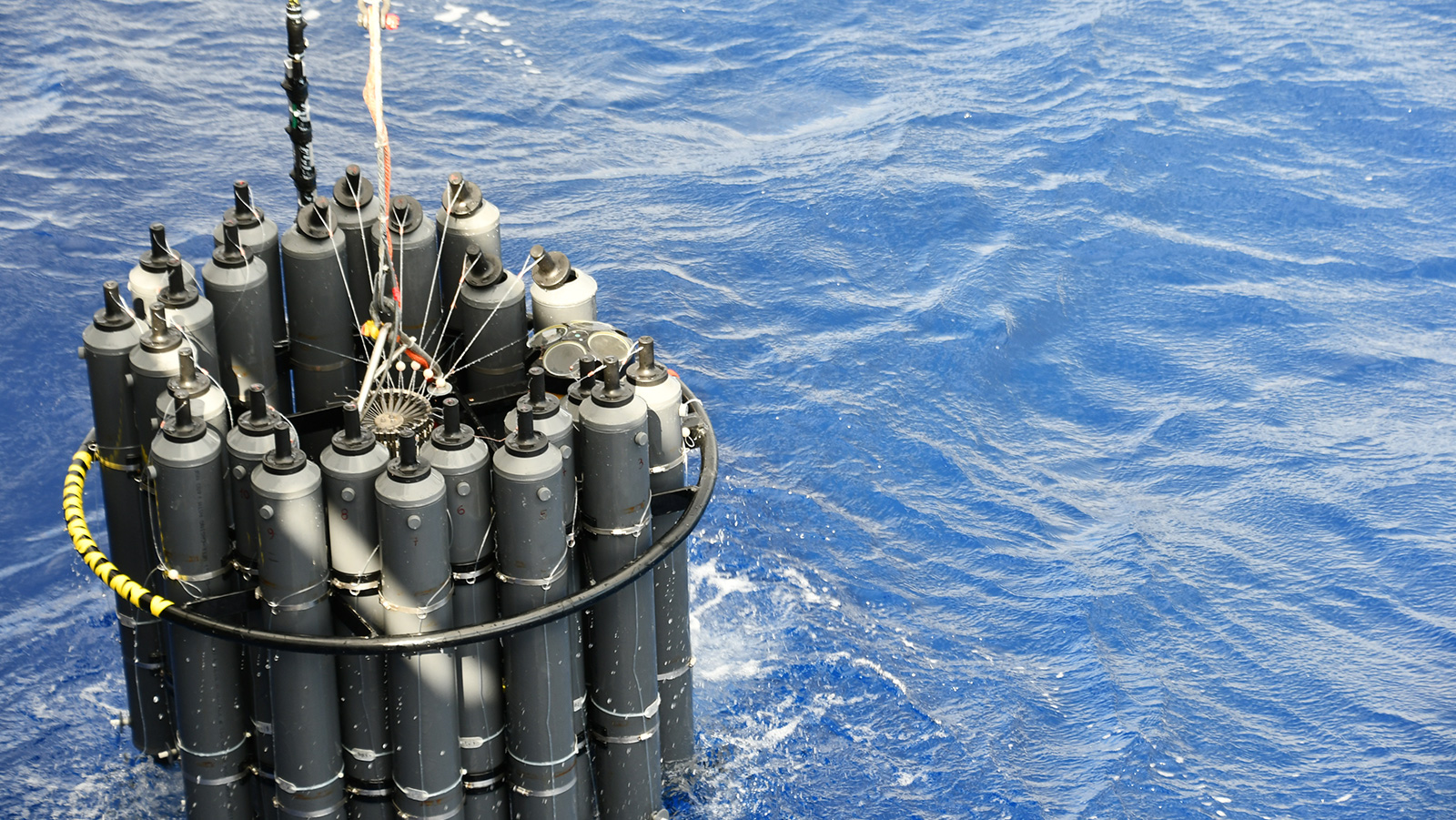On May 9, a team of scientists aboard the NOAA Ship Ronald H. Brown arrived at their final destination in Reykjavik, Iceland following 55 days at sea. The team of 50 scientists and 28 crew members followed a track through the North Atlantic, from Brazil to Iceland, referred to as the A16N transect, and successfully completed 150 stations, collecting over 3,000 samples from the Atlantic’s surface to the seafloor, giving scientists a holistic snapshot of the Atlantic Ocean basin.
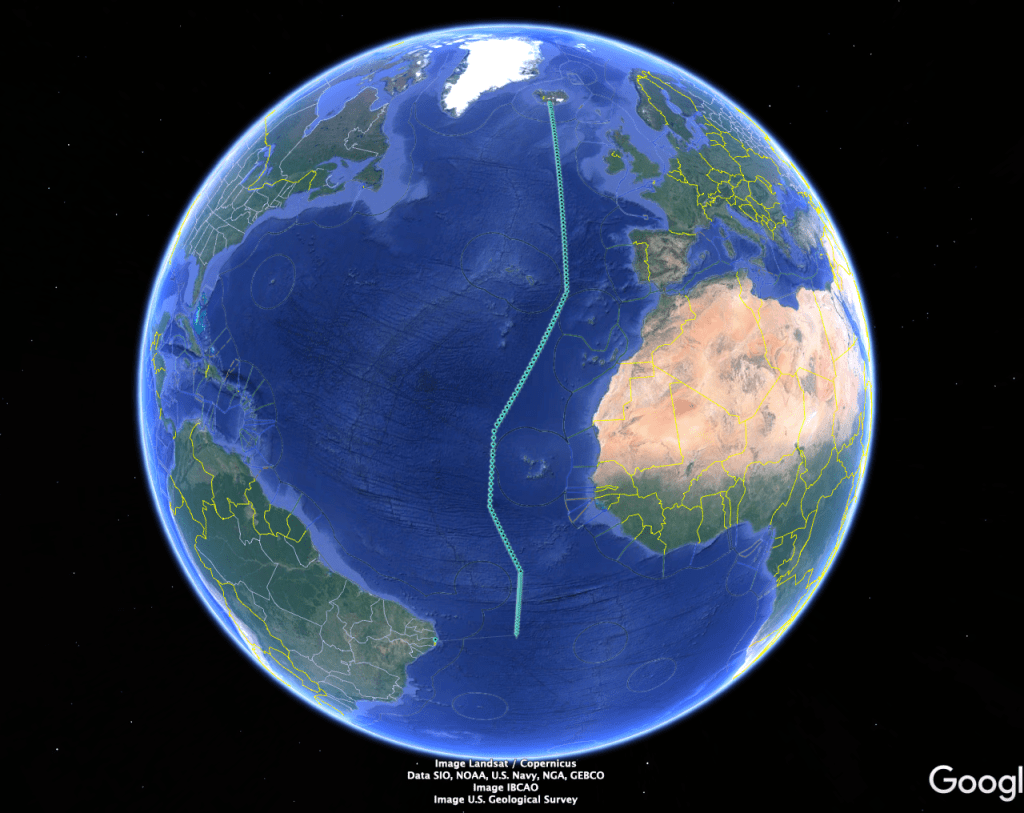
The Global Ocean Ship-Based Hydrographics Investigations Program (GO-SHIP) is an internationally coordinated effort to perform transects of all major ocean basins to decadally study changes in ocean heat content, ocean circulation, the carbon cycle, marine biogeochemistry, and biological parameters. This was the fourth occupation of the A16N line, with expeditions dating back to 1993. Data collected during this expedition will help researchers address critical questions regarding changes in the ocean’s circulation and the uptake of human-released carbon dioxide. The data will also enable them to examine how ocean warming is impacting the movement of seawater across the entire planet and influencing climate.
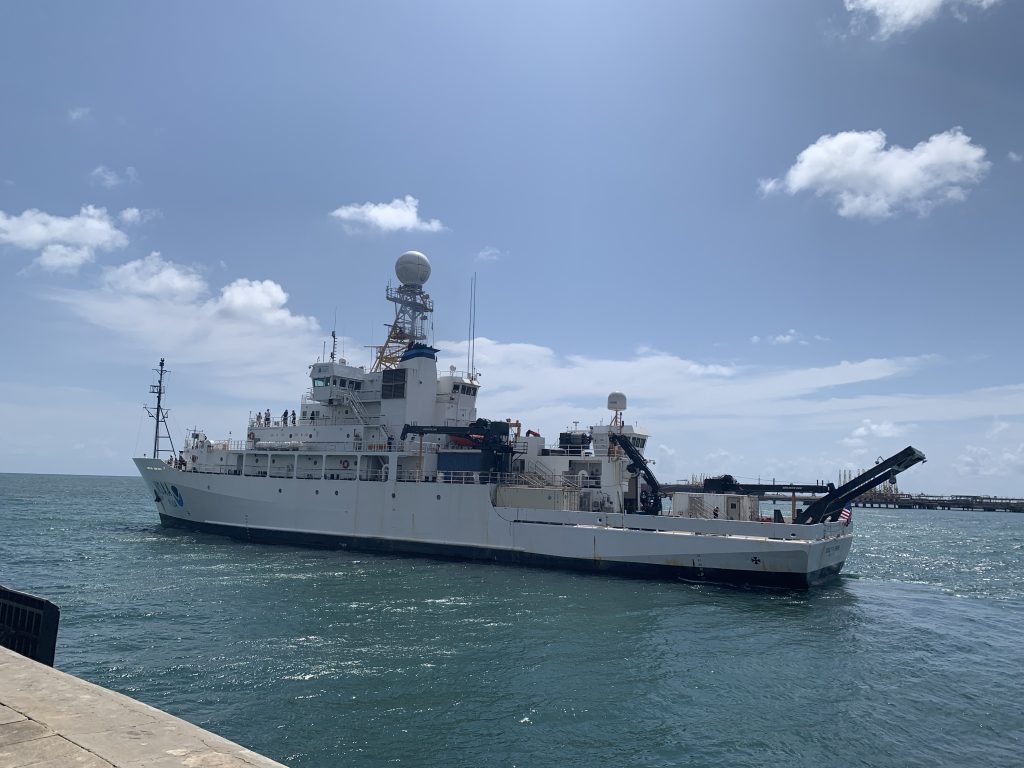
The Atlantic is the only ocean basin where widespread shifts in three of the fundamental nutrients required for growth of ocean life – nitrogen, phosphorus, and iron – are observed. The availability of such fundamental nutrients uniquely shapes the diversity, distribution, and functioning of marine life and biogeochemical cycles in this ocean basin.
GO-SHIP provides a platform to launch and calibrate ocean observing technologies, as well as test new research techniques. The cruises typically host a variety of crew that include university students, early-career scientists, and seasoned researchers. This tier of involvement not only provides for a diverse range of experience, knowledge, and ideas, but also a rich learning environment for students.
“I am extremely proud of everything the team did to make this expedition happen so successfully. Our engineers and deck crew worked around the clock, paying close attention to the engine and the winches, those working on the bridge were diligent, researchers were motivated, and everyone was willing to lend a helping hand. The cruise was an amazing show of teamwork and collaboration… I have so much gratitude for everyone giving their all, and I am looking forward to a fantastic dataset!” – Dr. Leticia Barbero A16N Leg 2 Chief Scientist & Chemical Oceanographer with the Cooperative Institute of Marine & Atmospheric Studies (CIMAS).
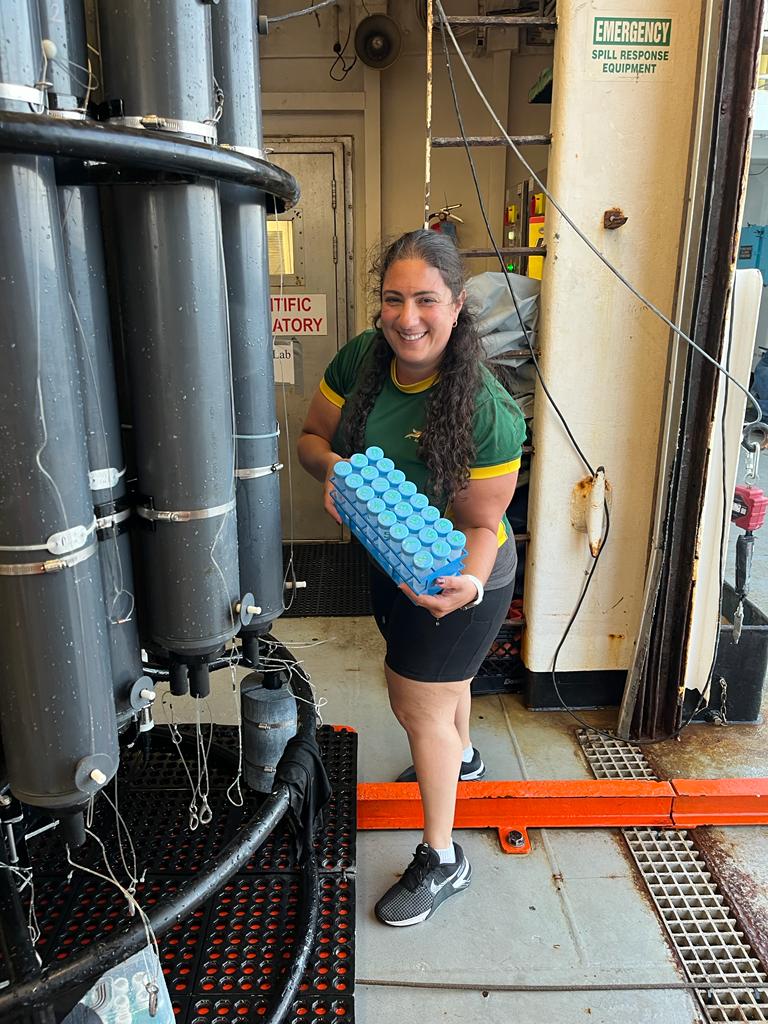
During the expedition, the Brown stopped at approximately 30-nautical mile intervals to collect conductivity, temperature, depth (CTD) measurements, as well as biological samples, at pre-set coordinate points or “stations.” The full-water column casts gathered 24 samples from the ocean surface to the seafloor, with the deepest measurements reaching depths of almost three miles. Scientists often braved intense weather conditions, sometimes working in eight to 12-foot seas, which slowed the pace of their operations. Despite these challenges, they persevered and successfully sampled all 150 stations along the transect. These observations will help researchers monitor changes occurring in the Atlantic across the entire water column over time.
During the first leg of the expedition, the ship transmitted through the Great Atlantic Sargassum Belt. The Brown sailed through this mass of vegetation for five full days, allowing scientists to collect 68 samples using hand-held nets. The samples were dried and sent to the Woods Hole Oceanographic Institution (WHOI) for analysis. With these samples, scientists hope to study the distribution of different Sargassum species, measuring their elemental composition to better understand their origin.
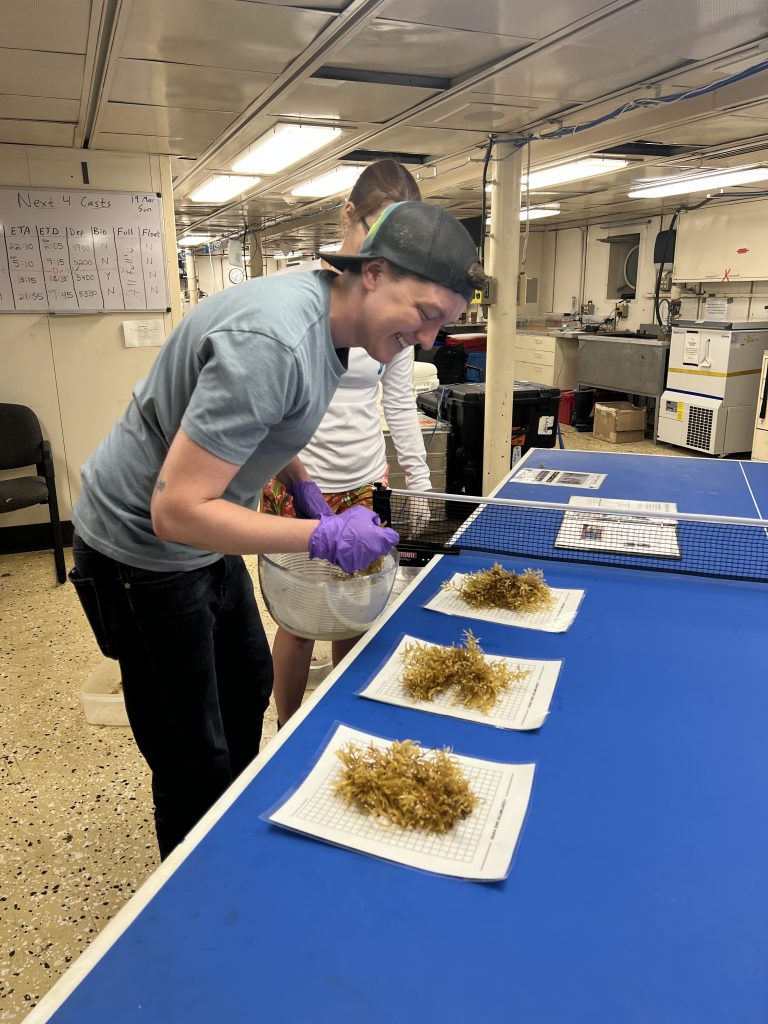
The 2023 GO-SHIP A16N cruise was the first NOAA-led cruise featuring a full suite of biological samples taken, in addition to the standard GO-SHIP sampling program. Bio-GO-SHIP is a new sustained ocean observing program that incorporates biological observations into GO-SHIP. Marine organisms, specifically plankton, are essential elements of the Earth’s ecosystems and climate regulation system, and they have not historically been measured in large-scale, repeat oceanographic monitoring efforts. The lack of a biological component in data collected from such efforts hampers the ability of scientists to see the full picture of ocean biogeochemistry, the oceanic food web, and their implications for climate and food security.
On GO-SHIP A16N, the Bio-GO-SHIP team deployed a variety of methods to measure plankton abundance and diversity. Instruments for optical backscattering, cell imagery, and flow cytometry were used for continuous inline sampling to quantify plankton along the entire cruise track. From the CTD rosette, samples to measure particulate organic matter and pigments were collected, and genetic material (DNA and RNA) from plankton were collected by filtration and preserved for extraction and sequencing. AOML and Northern Gulf Institute (NGI) scientists are leading the processing of the DNA samples, which will take place in the newly renovated Omics lab space. This sequence data will be combined with the other plankton data and oceanographic data to provide an integrative picture of marine plankton, and will provide a baseline for understanding global ocean changes and a rich dataset for modeling ocean biology.

The science team additionally deployed 12 robotic Argo floats, including floats capable of measuring ocean biogeochemistry in the deep ocean, and 10 drifters in support of NOAA’s Global Drifter Program. These autonomous floats and drifters will significantly expand the number of ocean measurements collected in the Atlantic for years to come, long after the A16N transect has been completed.
After long hours spent diligently collecting samples, scientists had the opportunity to wind down with a game of ping pong or participate in a triathlon where competitors rowed 500 meters, biked 3 miles, and ran 1 mile in the ship’s gym. The vessel also proved to be a great platform for viewing an amazing assortment of wildlife. Scientists were visited by flying fish, pilot whales, and dolphins, making for some exciting moments aboard the ship.

The A16N cruise marks the first NOAA GO-SHIP mission since 2018 and the last scientific voyage for the NOAA Ship Ronald H. Brown for the next one and a half years, as it is scheduled for dry-docking and repairs. Upon docking in Reykjavik, the Brown was visited by U.S. Ambassador to Iceland Carrin F. Patman, prompting a discussion on the importance of international collaboration for scientific research.
GO-SHIP is supported by NOAA and the National Science Foundation. The 2023 A16N GO-SHIP cruise was led by scientists at NOAA’s Atlantic Oceanographic and Meteorological and Pacific Marine Environmental Labs, with support from NOAA’s Global Ocean Monitoring and Observing Program. This collaborative expedition included scientists from the following institutions:
NOAA Atlantic Oceanographic and Meteorological Laboratory (AOML), NOAA Pacific Marine Environmental Laboratory (PMEL), Cooperative Institute for Marine and Atmospheric Science/University of Miami (CIMAS), Rosenstiel School of Marine, Atmospheric, and Earth Science/University of Miami, Cooperative Institute for Climate, Ocean, & Ecosystem Studies/University of Washington (CICOES), University of California Santa Barbara (UCSB), University of Hawaii (U. Hawaii), Lamont-Doherty Earth Observatory/Columbia University (LDEO), Woods Hole Oceanographic Institution (WHOI), University of Delaware (U. Del), University of California Irvine (UC Irvine), Texas A&M University (TAMU), Oregon State University (Oregon), Scripps Institution of Oceanography/University of California at San Diego (SIO), Northern Gulf Institute (NGI).
Congratulations to the hardworking scientists and crew for their dedication in successfully completing the A16N transect.
